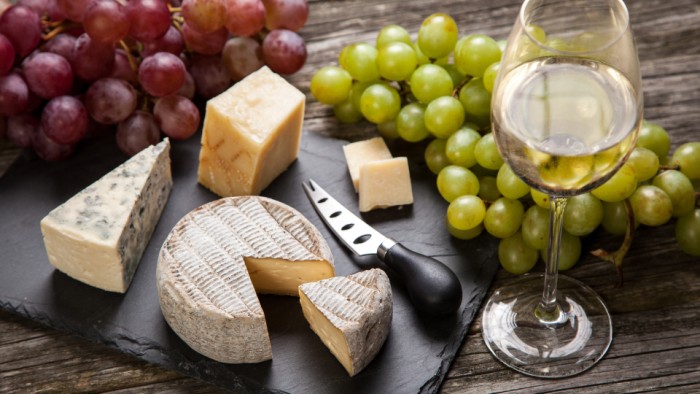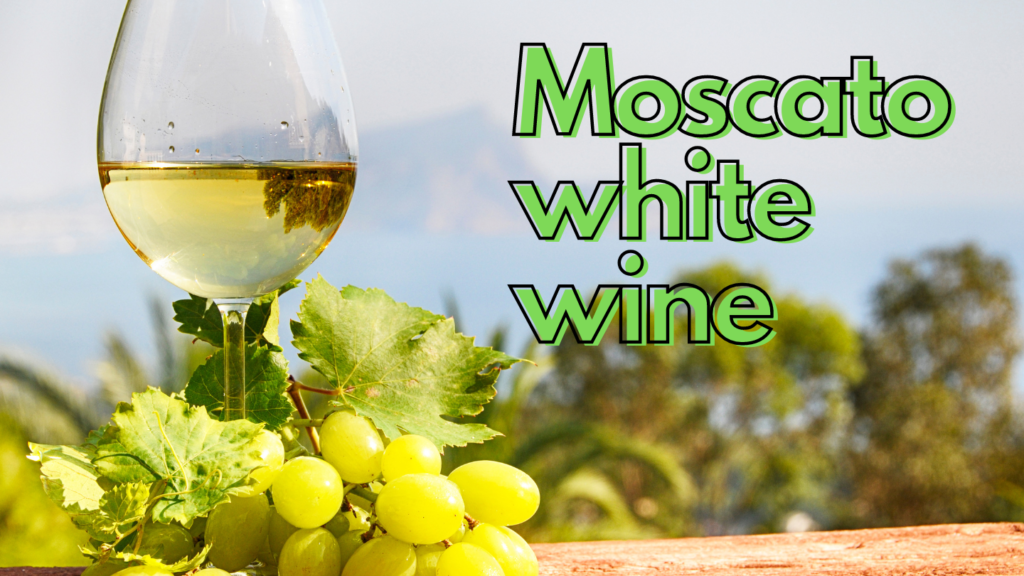Introduction Sweet White Wine
There is a delicious array of wine options available worldwide to satisfy every palette. sweet white wine is one such type that frequently appeals to both the palate and the heart. this guide will take you on a voyage through the beautiful sweet white wine.
Why White Sweet Wine?
A perfect balance: Sweet white wines are renowned for their skillful balancing of acidity and sweetness. they are fantastic options for both novice and experienced wine consumers due to their harmonic blend.
Versatility: There are many different types of sweet white wines, ranging from lightly sweet to dessert-level sweet. because of their adaptability, you can match them with a variety of things, from spicily prepared meals to rich sweets.
sweet white wine Types
Sweet white wine varieties include Riesling. riesling wines come in a variety of sweetness levels and are renowned for their fragrant flavor and sharp acidity. german rieslings, for instance, can have lovely fruity flavors and range in sweetness from bone-dry to sweet.
Moscato
Moscato is popular among individuals who like a sweeter wine due to its low alcohol content and sweet, fruity notes. your wine experience is made more enjoyable by its effervescence. It is made from the muscat grape variety, which is one of the oldest and most widely planted grape varieties in the world. Moscato wines are often considered by their aromatic qualities with the notes of peach, apricot, orange bloom, and sometimes a hint of musk or spice.
There are different varieties of Moscato wine, Including
Moscato d’Asti: This is a sparkling Italian wine from the Piedmont Region. It is Typically Lower in alcohol content(around 5-7%) it is known for its sweetness and is often enjoyed as a dessert wine
Asti Spumante: Another Italian wine made from Moscato grapes, asti Spumante is typically sweeter and has a higher level of carbonation compared to Moscato d’Asti.
Moscato Giallo: This is a dry or semi-sweet version of Moscato, with less residual sugar than other Moscatao wines. It is produced in various regions, including Italy and California.
Moscato Rosa: It is known as pink Moscato, It is a red wine variety under Moscato this wine has a pink or rose color and is slightly sweeter than traditional white Moscato. It often features berry and floral notes.
Moscato wines are popular for their easy-drinking and approachable nature, making them a favorite choice for those who prefer sweeter wines or are new to wine tasting. They pair well with fruit-based desserts, cheeses, and even spicy dishes due to their sweet profile that can balance out heat and spice.
Chenin Blanc
It is a grape variety that may provide a range of sweet wines, from off-dry to decadently sweet. Honey, pear, and apple flavors are frequently present in Chenin Blanc sweet wines. It is believed to have originated in the Loire Valley of France.
Vouvray It is a renowned appellation in the Loire Valley of France producing high-quality Chenin Blanc wines. These wines can range from dry and sweet, with flavors of honey, apple, pear, and sometimes a characteristic minerality.
Savenniers This is another dry, full-bodied chenin blanc wine. they often have intense flavors of green apple, quince, and a pronounced mineral quality.
Anjou Blanc Chenin Blanc wines from Anjou can be either dry or sweet. The sweet Versions, Labeled as “Coteaux du layon” are known for their honeyed, botrytis-affected characteristics.
South African Chenin Blanc South Africa is one of the largest producers of Chenin Blanc in the world. the wines from crisp and refreshing to full-bodied and oak-aged. they often exhibit tropical fruit, citrus, and melon notes.
California Chenin Blanc produces Chenin Blanc wines, which can range from dry to sweet. these wines typically have flavors of green apple, pear, and a touch of floral and honeyed notes.
Australian Chenin Blanc These wines tend to have a bright acidity and flavors of green apple, lemon, and pear.
Sauternes
French wine in the Bordeaux region, known for its exquisite sweetness and complexity, is known as Sauternes. They go well with foie gras and blue cheese and are frequently consumed as dessert wines
Sauternes This is the sweet wine produced in the Sauternes region. These wines are typically made from a blend of Semillon, Sauvignon Blanc, and sometimes Muscadelle grapes that have been affected by noble rot, a beneficial fungus that concentrates the sugars and flavors in the grapes. Sauternes wines are sweet, full-bodied, and known for their honeyed, apricot, and marmalade-like flavors.
Premier Cru Premier Cru wines are also of high quality but may not have the same aging potential as Premier Cru Superieur wines. Producers in this category include Chateau Rieussec.
Deuxieme Cru These wines are good quality but are generally considered to be a step below Premier Cru wines in terms of aging potential.
Sauternes Barsac It is a neighboring appellation to sauternes and is also known for producing sweet wines and sauternes Barsac wines are often labeled as “Barsac” rather than “Sauternes”.
Generic SauternesThese wines can still be of very good quality, but they may not have the same reputation or aging potential as the classified growth.
Sauternes wines are highly prized for their sweetness, complexity, and ability to age gracefully. They are often enjoyed as a dessert wine, and their flavors can pair wonderfully with a variety of foods, including foie gras, blue cheese, and desserts like creme burlee or fruit tarts.
Serving and combinations of serving temperature depend on the wine style, chilled sweet white wines should be served at a temperature of 45°F to 55°F (7°C to 13°C).
Food pairing white sweet wines go amazingly well with food A sweet Riesling would go well with with spicy Thai food, a Moscato would go well with cheese or fresh fruit, and sau ternes would go well with decadent desert-like creme brulee.
Depending on the individual wine, the degree of sweetness, and the amount of alcohol in it, the nutritional information of sweet white wine can change. however, based on common serving sizes, which are typically 5 fluid ounces(148 milliliters) for a glass of wine. the following are the sweet white wine’s
Approximate nutritional values
- Calories A 5-ounce(148ml) serving of sweet white wine normally has 120-130 calories.
- Carbohydrates It is mostly made up of carbs, with each meal containing between 10 and 15 grams. sugars account for the majority of these carbs.
- Sugar Sweet white wines are renowned for having a lot of sugar in them. per 5-ounce serving they may include up to 30 grams of sugar, or even more in some situations. depending on how sweet the wine is, the sugar concentrations vary.
- Alcohol Although sweet white wines’ alcohol volume(ABV) varies, it normally ranges from 8% to 13% higher ABV is possible in some dessert wines.
- Protein and Fat Each serving of sweet white wine has a very small quantity of protein and fat
- Sodium It only has a very small amount of sodium in each serving, usually less than 5 milligrams.
it’s vital to keep in mind that sweet white wine can vary greatly in terms of its nutritional value depending on the brand, grape variety, and production process. For some accurate information, make sure to read the label on the particular bottle of sweet white wine you are drinking.
sweet white wine brands
- Chateau d’Yquem France The French winery Chateau d”Yquem is renowned for making some of the finest and most opulent sweet white wines in the world, particularly sauternes.
- Ridgeview United Kingdom is well known for its sweet sparkling white wines, which are frequently produced using the Bacchus grape variety.
- Inniskillin Canada is well known for its ice wines, especially the highly sweet and creamy Vidal ice wine.
- Beringer Unites States for those who prefer selections, bringers late harvest, and white zinfandel wines are popular choices.
- Moscato d’Asti Italy is a type of sweet sparkling wine produced by many different Italian winemakers. for outstanding specimens, look for labels like la Spinetta, vietti, or saracco.
- Dr. Loosen Germany is renowned for producing premium rieslings, including sweet varieties like Dr. Loosen Riesling’s Beerenauslese.
- Yalumba Australia Museum reserves rich, raisin-like tastes that make Muscat, a well-known sweet wine, so distinctive.
- Royal Tokaji Hungary Asz and Tokaji Essencia are only a couple of sweet wines available from Royal Tokaji (Hungary} which specializes in tokaji wines.
- Disznoko Hungary Another well-known tokaji producer is Disznok which is renowned for its sweet wines with the ideal harmony of sweetness and acidity.
- Eroica United States a collaboration between Chateau Ste. Michelle in Washington state and Dr. Loosen in Germany, Eroica produces exponential riesling wines, including some sweet options.
Frequently Asked Questions?
How Many Glasses of Wine in a Bottle?
A Standard wine bottle typically contains 750 milliliters of wine the number of glasses you can pour from a bottle depends on the size of the glasses and how much wine you pour into each glass. A standard serving size for wine is about 5 ounces (150ml)
How to open a Wine Bottle Without a Corkscrew?
Opening a wine bottle without a corkscrew can be challenging, but there are a few creative methods you can try to push the crock in and twist the cork into the bottle be careful not to push the cork all the way. use the key to twist the key gently while applying upward pressure.
How Many Ounces in a bottle of wine?
A standard bottle of wine contains 750 milliliters of liquid 1 fluid ounces is approximately 29.5735 milliliters. Therefore 750 (1 fl oz/ 29.5735 ml) equals 25.4 fluid ounces.
How Many Bottles are in a case of wine?
The number of bottles in a case of wine can vary depending on the type of wine and the producer, but a standard case typically contains 12 bottles. This is the most common configuration for wine cases.
How Many Calories in a Bottle of Wine?
The number of calories in a bottle of wine can vary based on factors such as the type of wine, its alcohol content, and any added sugars. However, as a general guideline, a standard 750 ml bottle of wine contains approximately 600-800 calories
White Wine Sweetness Chart
| Sweetness Level | Residual Sugar (g/L) | Examples of Wines |
| Very Dry | 0 – 4 | Sauvignon Blanc, Pinot Grigio, Dry Riesling |
| Dry | 5 – 12 | Chardonnay, Pinot Gris, Unoaked White Rioja |
| Off-Dry | 13 – 20 | Gewürztraminer, Chenin Blanc, Semi-Sweet Riesling |
| Medium Sweet | 21 – 45 | Moscato, Pinot Blanc, Late Harvest Riesling |
| Sweet | 46 – 75 | Sauternes, Ice Wine, Tokaji Aszú |
| Very Sweet | 75+ | Port, Sherry, PX |
To Summarize
If you are watching your calorie intake, it’s crucial to be aware of the calories in wine. while sweet white wine can be enjoyed in moderation, it’s crucial to be conscious of its calorie count and alcohol content as a part of your overall nutritional considerations Sweet White wine is not only a beverage, it’s a sensory experience. its aromatic bouquet, balanced sweetness, and versatility make it a delightful addition to any occasion. Whether you are celebrating a special moment or simply unwinding after a long day, the sweet embrace of a well-chosen white wine can elevate your experience thank you.





It is my pleasure to read everything in one spot; this is my first little visit.